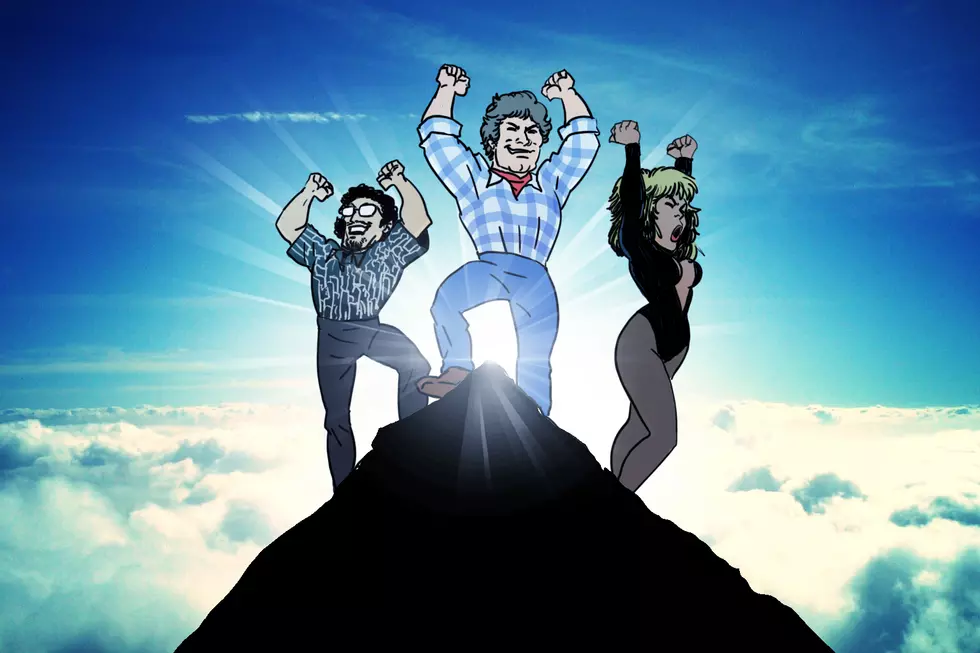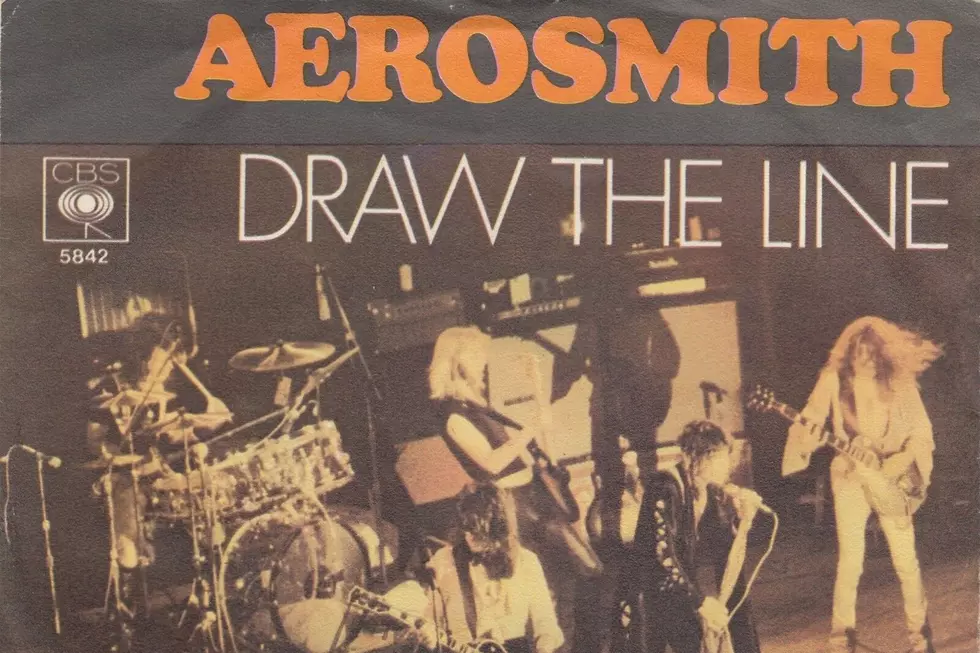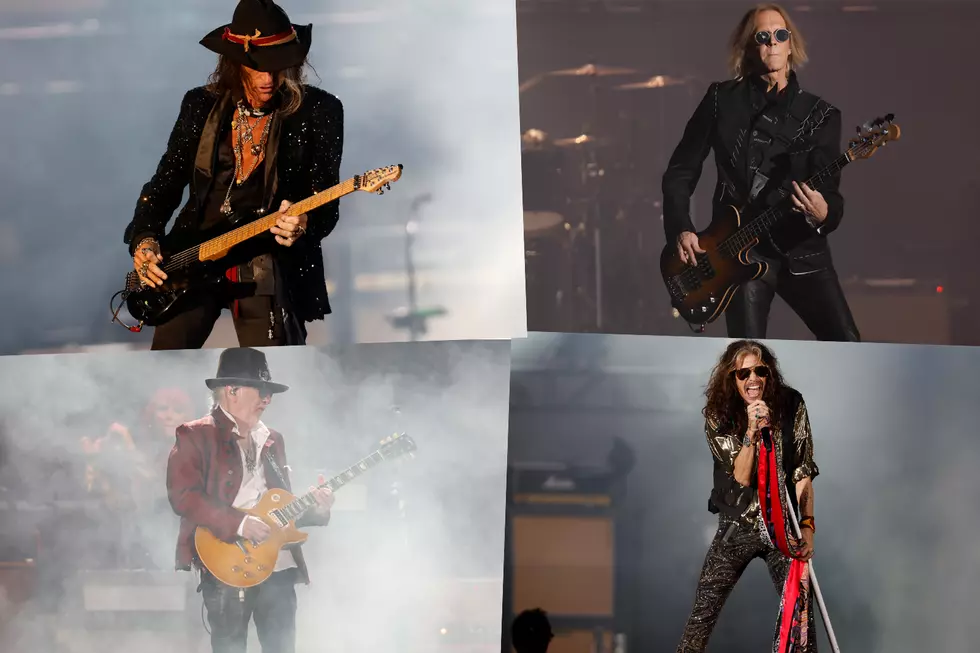
How Aerosmith Survived the ’80s
There wasn’t a band filled with more uncertainty entering the '80s than Aerosmith. Even though they were riding high on '70s hits like “Sweet Emotion” and “Back in the Saddle,” substance abuse and bitter infighting had taken its toll, leading to the exit of guitarist Joe Perry in the summer of 1979 during the recording sessions for Night in the Ruts, which came out at the end of the year. Richie Supa and Jimmy Crespo had helped round out the guitar parts, with the latter eventually taking Perry’s spot.
While an estranged Perry was launching a solo career with the Joe Perry Project, Aerosmith were struggling, playing scaled-down shows at smaller venues as opposed to the arenas they had been filling just a year or so before. The shows were also inconsistent: Four songs into a Jan. 20, 1980, set at the Cumberland County Civic Center in Portland, Maine, singer Steven Tyler was too inebriated to continue and pretended to collapse onstage.
“I dropped down and faked passing out,” Tyler said in 1997’s Walk This Way: The Autobiography of Aerosmith. “I’m so good at it, I even shook my foot so it looked bad.”
Tyler was on the ground again that fall, but this time it was for real. Drunk and high, he crashed his motorcycle in New Hampshire in an accident so bad that it left his heel hanging off and put him in the hospital for two months. “I was in a cast up to my eyeballs,” Tyler said.
The campaign to promote Night in the Ruts ended immediately, with Tyler on the shelf for the better part of 1981 and Aerosmith consigned to a stretch of inactivity. The unexpected break led rhythm guitarist Brad Whitford to follow Perry out the door to form Whitford/St. Holmes with Ted Nugent's singer Derek St. Holmes. That union wouldn’t last, and Whitford would eventually join the Joe Perry Project on tour as an additional guitarist.
Back in Aerosmith, with Tyler, bassist Tom Hamilton and drummer Joey Kramer the remaining original members, the group put together Rock in a Hard Place, which came out in the summer of 1982. Crespo remained in the lead guitar position, with Rick Dufay coming on board as the recording sessions came to a close.
The album tanked, despite some solid songs like “Jailbait,” “Bitches Brew” and the single “Lightning Strikes,” which had an accompanying video ignored by the year-old MTV. A lengthy tour went ahead, though, getting off to an auspicious start. On Nov. 16, 1982, four dates into the run, at the Centrum in Worcester, Mass., Perry and Whitford showed up backstage, with the former getting Tyler high before the show. Late in the set, during “Toys in the Attic,” the singer collapsed, leaving the rest of the band furious – mainly at Perry for hooking Tyler up in the first place.
“The gig was trashed, I was livid,” recalled Hamilton in Walk This Way. “I found Joe out in the hall, took him into a closet and started yelling at him. All I knew was that [Perry and Tyler] were together and then this great gig went down the toilet.”
Watch Aerosmith's Video for 'Lightning Strikes'
Perry’s solo career was heading in the same direction, as the third LP by the Joe Perry Project, Once a Rocker, Always a Rocker, bombed on the charts. Floundering apart, Whitford and Perry returned to Aerosmith in spring 1984, and the rebuilding attempt was underway with the Back in the Saddle Tour, which launched that summer.
“Steven and I talked and decided we were better off together than apart,” Perry tells Ultimate Classic Rock. “So we started rollin’ again.”
Done with Mirrors didn’t exactly set the charts on fire upon its release in 1985. It was the first record Aerosmith made for their new label, Geffen, but there was little support from radio and once again MTV ignored the video the band made for Perry's “Let the Music Do the Talking.”
Watch Aerosmith's Video for 'Let the Music Do the Talking'
Then Def Jam co-founder and producer Rick Rubin came calling with hip-hop stars Run-D.M.C. in 1986, and asked if Tyler and Perry would be interested in collaborating on a rap-infused remake of the Toys in the Attic classic “Walk This Way.” With nothing to lose, the pair agreed not only to lay down vocals and guitar, but also to appear in the video.
“One of the things that was a benchmark for the '80s was riding on the shuttle back to New York with [MTV VJ] J.J. Jackson,” Perry says. “He was telling me about this new TV station called MTV, and they’re just gonna have 24-hour music and videos. In my head, I thought, “Okay ... ,” because we had shot a couple of videos in the '70s for promotion, but certainly nothing like it got up to when the '80s rolled along. And we were pretty young in the '70s, so we managed to catch that wave too.”
The collaboration with Run-D.M.C. wasn’t just a much-needed boon to the decimated profile of Aerosmith, it catapulted them into the living rooms of the millions of teenagers who had become obsessed with music television.
“MTV was a very powerful force at that point,” Perry notes. “That was kind of the format. Certainly radio was an important part, but it was all about having a great video and a great song with it. Even now when we go out and put the set list up, we talk about what songs had those videos and those seem to be the ones that carry the weight.”
As the '80s wore on, more bands sprung up with roots in Aerosmith’s sound, but looking like a distinctly different sex. Boys styled themselves like girls, and the women loved the look, but to Perry that image was old news.
“We did that in the early 70s,” he says. “We came up right next to the [New York] Dolls, and they were doing all of that. We’ve all made fashion mistakes over the years. There’s always pictures of bad haircuts, but we ended up cutting our own path.”
Determined not to squander the opening “Walk This Way” provided, the members of Aerosmith got sober one by one. Putting the disappointing sales for Done With Mirrors behind them, and rejuvenated by the surge in popularity, they fulfilled their comeback hopes with Permanent Vacation in 1987. Buoyed by the mega-hits “Dude (Looks Like a Lady)” and “Rag Doll,” the group were suddenly the darlings of MTV, fitting in seamlessly alongside the hair-metal acts dominating the channel.
“Seeing some of these bands come up, like Whitesnake and Guns N’ Roses, the whole climate was changing and we had to step up to the plate or move on,” Perry says. “We stepped up to the plate. Adapting to the new climate and the whole video thing, I have to say, we probably had a little lipstick on, but, you know" -- he laughs -- "just for the cameras.”
Bringing in outside writers like Jim Vallance and Desmond Child helped, as did enlisting producer Bruce Fairbairn, who added a pop gloss, much like he did on Bon Jovi’s 1986 multi-platinum seller Slippery When Wet. Aerosmith’s music no longer appealed solely to their “Blue Army” fan base of denim-clad guys; ballads like “Angel” drew in the coveted female demographic and propelled them back into packed arenas.
Watch Aerosmith's 'Angel' Video
Following a lengthy tour to support Permanent Vacation, made even more attractive with the white-hot Guns N’ Roses as the concerts' openers, Aerosmith went back into the studio to keep the momentum going. The result was 1989’s Pump, which landed in the Top 5 on the charts and cemented the group’s status as legends that received an elusive second chance.
“We kept on shedding our layers of skin and the true spirit of the band kept us goin’ – and our fans – carried the songs that made us famous and infamous,” Perry notes. “We just kept adapting; we brought some other songwriters on board and kept it fresh. It was interesting, you know?”
30 Most Outrageous '80s Rock Fashions
More From Mix 92.3










